
Productive struggle time in math is not natural. Allowing children to struggle with something goes against every instinct I have. When I see a child having difficulty, every pore in my body wants to take over and fix the problem. However, as a mom and as a teacher, I know that is exactly what I should not do. Struggle time is an essential, yet often skipped, part of the learning process.
Struggling with a new concept of very disconcerting for students, especially your high achieving perfectionist. I can’t tell you how many times I’ve seen students completely melt-down or shut-down over feeling stuck or defeated academically. This is obviously a negative reaction that I want to prevent and avoid. At the same time, I don’t want to eliminate the struggle from my students. Instead, I try to teach students how to persevere and problem solve to overcome the struggle.
The Research Behind Productive Struggle Time
I’m one of those people who has to see the research, so I’ve included just a tidbit of what I’ve learned over the years. If that’s not your thing, you can skip ahead to the actual classroom implementation portion of this blog post. Steven Katz and Lisa Ain Dack write in their book, Intentional Interruption: Breaking Down Learning Barriers to Transform Professional Practice: “The experience of cognitive discomfort is not an unfortunate consequence of new learning: it is an essential prerequisite of new learning.”
I’m also taking a math course from Jo Boaler, who is a Stanford professor and math leader. In her course, she explains that “mistakes and struggle make your brain grow.”
The National Council of Teachers of Mathematics (NCTM) policy document, Principles to Actions: Ensuring Mathematical Success for All notes that “an effective teacher provides students with appropriate challenges, encourages perseverance in solving problems, and supports productive struggle in learning mathematics.”
Apparently the official term for this is “productive struggle.” This productive struggle should be less about frustration and more about trying something new. For the struggle to be productive, the mathematics must be within reach of students. Also, the math the students are wrestling with must be directly related to the mathematical goals of the lesson or unit.
Classroom Implementation
I’ve found that defining the struggle makes it much less intimidating and overwhelming for my students. In my classroom we call it “Struggle Time”. I explicitly teach a mini lesson on productive struggle time that is a great starting place for teaching students how to embrace the struggle.
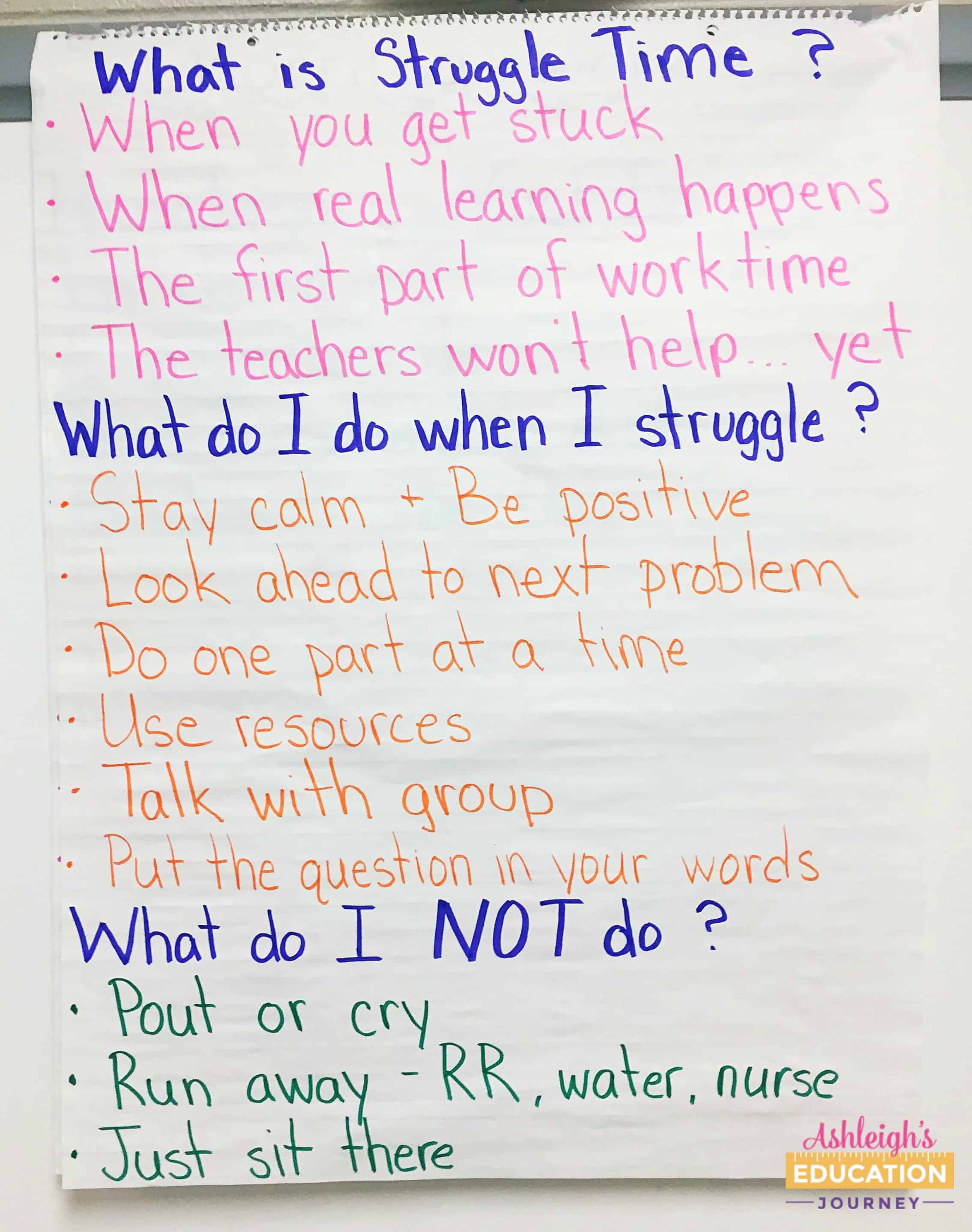
What is Productive Struggle Time?
We begin the lesson by discussing what productive struggle time is, because most of my students have never heard the term before. I ask for volunteers to share a time when they were learning something new that they initially struggled with. While adults may not always enjoy volunteering this type of anecdote, I almost always have every student in the classroom want to share a story. After listening to a few examples, I ask students to describe how they felt as they struggled. Most students will acknowledge that they felt upset or frustrated. I push even further and ask students why they think they feel so upset when they struggle while learning something new.
After listing to a few responses, I lead in to a discussion on how we’ve been conditioned to think that when we struggle with something we’re not smart, but that absolutely is not true. I use the following lead it to introduce the idea of struggle time: When babies first learn to walk, they fall all the time. Does that mean they’re not smart or will never be able to walk correctly? Of course not! They are simply in the process of learning how to walk.
What about young children learning how to read? If I walked into a kindergarten class and handed a student a chapter book could s/he read it? No. Does that mean they’re a bad reader? No! They simply have to learn how to read, and it may take a year or two, but they can and will eventually be able to read that chapter book.
Boys and girls, struggling is part of the learning process. We can’t escape it or run away from it. This year during math workshop, you’re going to experience what I call struggle time.

Productive Struggle Anchor Chart
After introducing the idea of productive struggle time, I work with the class to create an anchor chart that defines and explains this portion of math workshop. This is a time when students get stuck solving a problem. I want my students to know that they will all struggle with something during the year. I explain that if they’re not struggling, I’m not doing my job as a teacher. If they already know everything that I’m teaching then they’re not learning anything new. This is the time when real learning occurs. Yes, I can tell a student how to solve a problem, but the student will only be copying my steps or a procedure. They’re not making sense of a concept and problem solving.
In my classroom, our official “struggle time” is at the start of students’ work time. I begin with a mini lesson in which I teach a skill and explain directions, so this is not a time where students should experience a true “struggle time”. During this part of instruction, I’m constantly offering support and clarification. Instead, “struggle time” should begin when students start their workshop task. The presence or absence of the struggle is often a litmus test for the task itself. If every student in my classroom can quickly complete the day’s activities, more than likely the task wasn’t rigorous enough. During students’ first five minutes of work time, I won’t help students or clarify how to solve the problem. I always make a big production of that statement:
“Now, I know that sounds horrible! My teacher won’t help me with my math! But now do you all think I’m going to go sit at my desk and update my Facebook status? No way! Guess what I am going to be doing? That’s right! I’m watching you to see how you attack the problem. I’m listening for what strategies you’re using and what misconceptions you may have. Now do you think I’ll going to make you struggle the WHOLE time? No way! After about five minutes, I’ll step in and help you but, you’ll be surprised to see how much you can do own your own!”
After our “struggle time” is over, I will help students. I try hard to guide students with questioning rather than telling, but that is something I’m still working on.
As the facilitator, it’s essential for me to provide students with tasks that are in that the zone of proximal development for my students. This zone lies between what students can do and what is just out of reach. If a task is too simplified for students then there is no challenge to overcome. On the other hand, if the task is too difficult then the struggle is pointless, because the concept is not accessible to students. This is the reason I’m so picky about what I use for my math instruction.
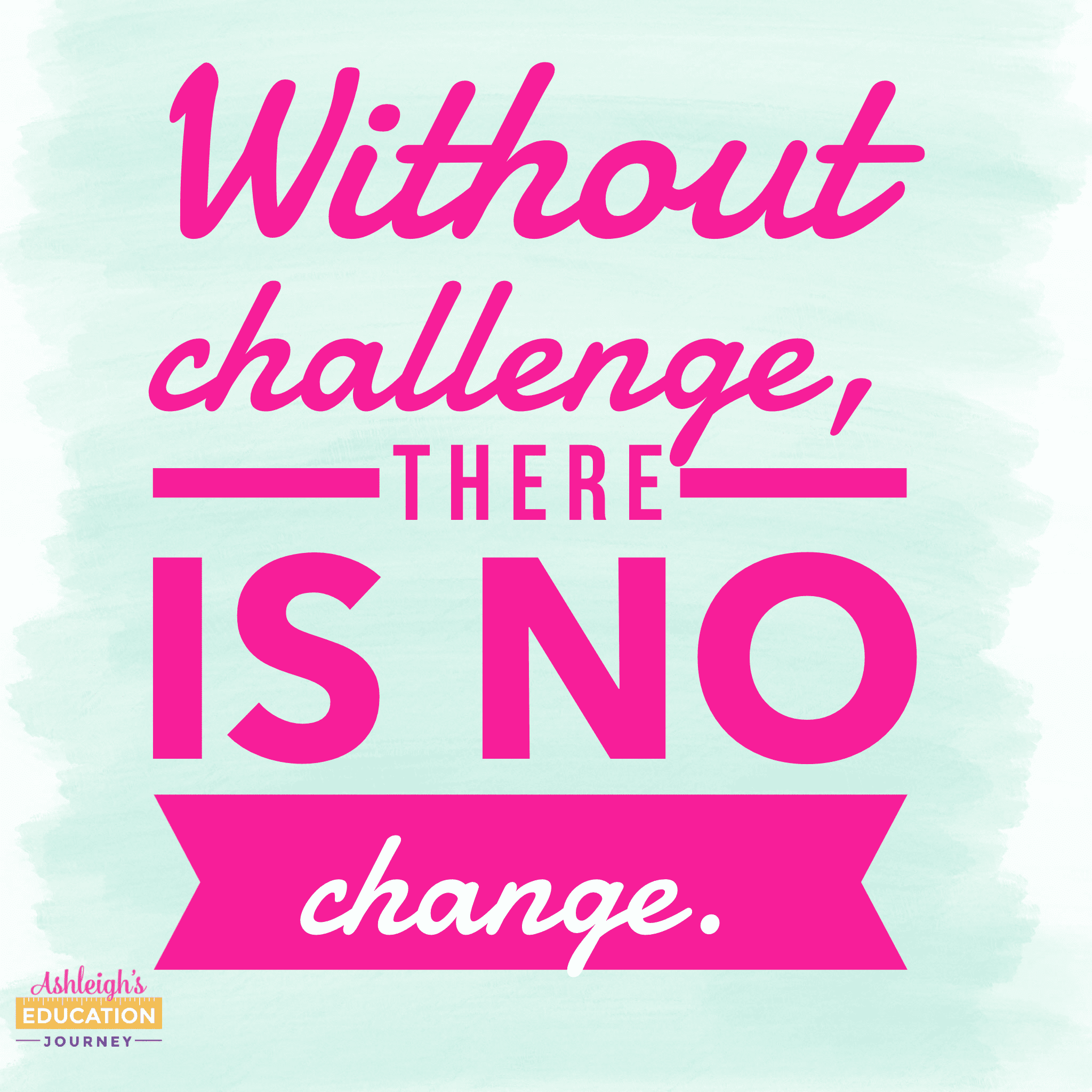
What Do I Do During Struggle Time?
I then guide the lesson into teach students what they can do when they get stuck during math work time. Rather than me telling students what strategies to use, I have my students brainstorm and tell me what strategies they can use. We always discuss the importance of attitude. I make a big, goofy demonstration about the difference between a negative attitude and positive attitude and talk about how important it is to remain positive. I also make sure students know how to use the resources around the classroom. They have their Math Reference Notes, Anchor Charts, Word Wall Cards, and sample student work to refer to, so I want them to actually use those resources.
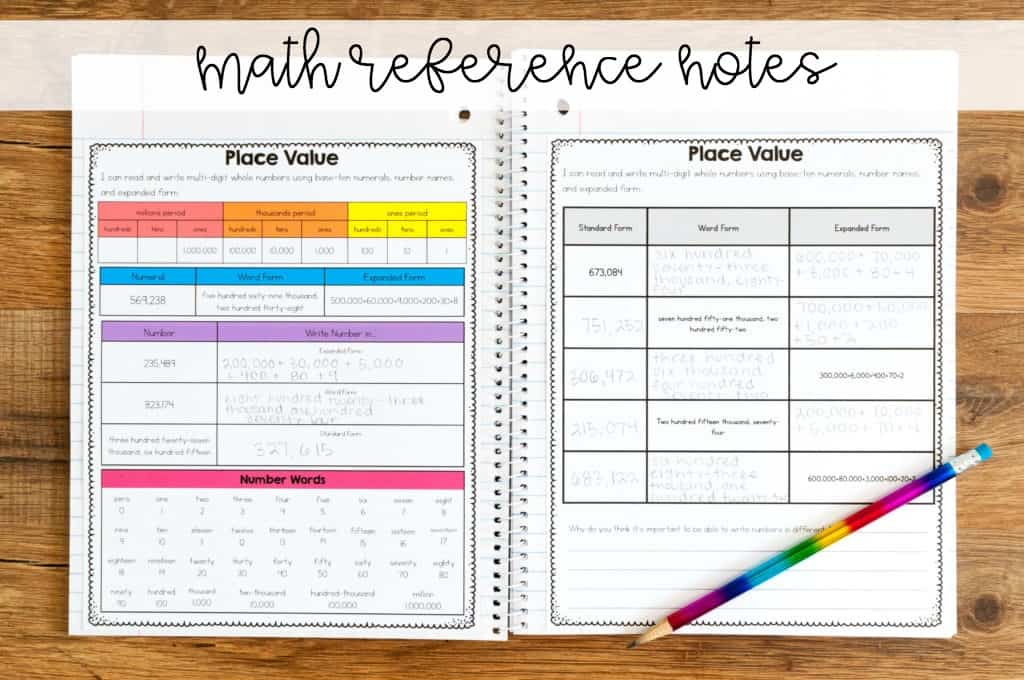
I arrange my students into groups of four, and encourage them to talk to their group. During our work time, I want my students to talk to each other. Of course, I expect them to use accountable talk, which is a whole other lesson. I also talk about how it’s not necessary to solve the whole problem at one time. It’s okay to break the problem into parts and to take it one step at a time. Students often want to see the whole plan before they begin working, but that’s not always possible with complex tasks. I tell my students that whenever I write anything my first sentence is always my most difficult sentence, because getting started is hard.
Throughout the year, I will teach problem solving strategies that my students will be able to apply to math workshop and productive struggle time. When I refer to problem solving, I’m not talking about general word problems or even multi-step word problems. Instead, I’m talking about problem solving tasks. For example, in the task below students problem solve to determine how much pizza each child can receive. This is not an easy task for the beginning of a fraction unit, and most students will need lots of trial and error, but with time and problem solving they can solve the problem and by solving the problem develop a deeper fraction number sense.
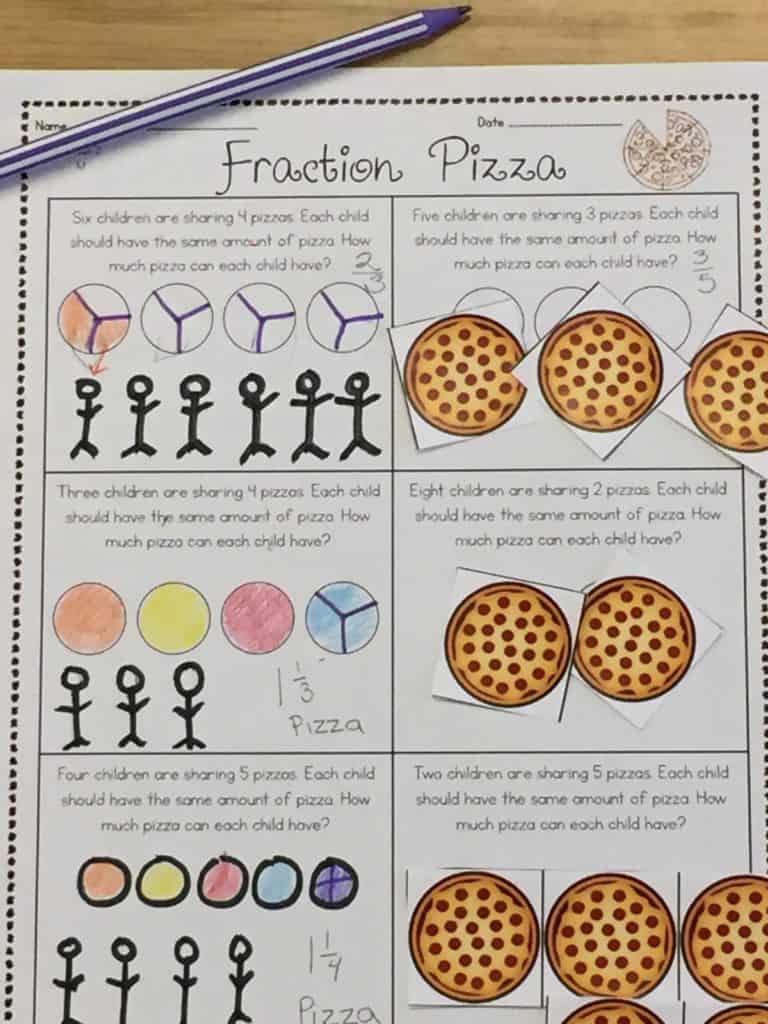
What NOT TO Do During Struggle Time
I end the lesson by discussing what not to do during productive struggle time. My students suggested pout or cry, so I added that to the anchor chart. I added run away to the chart. My students laughed, because they thought I was being literal. But I explained I often see students avoiding challenging work by going to the restroom, asking to to get water or refill water bottles, asking to go to the nurse, etc. I see that frequently, and I think my students are surprised that I notice. The final and most important thing for students to not do is to just sit there. Nope. That’s not okay. I explain that I would MUCH rather see them try and fail that not try at all.
After our “struggle time” is over, I don’t want someone to raise their hand and say, “I don’t get it.” after making no attempt. We talk about how students must show an effort to get started and to overcome their challenges. We talk about how sitting and waiting to be rescued doesn’t help the learner. As teachers when we rescue students, we’re communicating that we don’t believe the student can solve the problem. Instead, after the initial five minutes, I ask guided questions that hopefully help students get started. If even then I see that a student is completely confused and not making any forward progress, I will typically work with that student individually or in a small group if there are other students in the same situation.
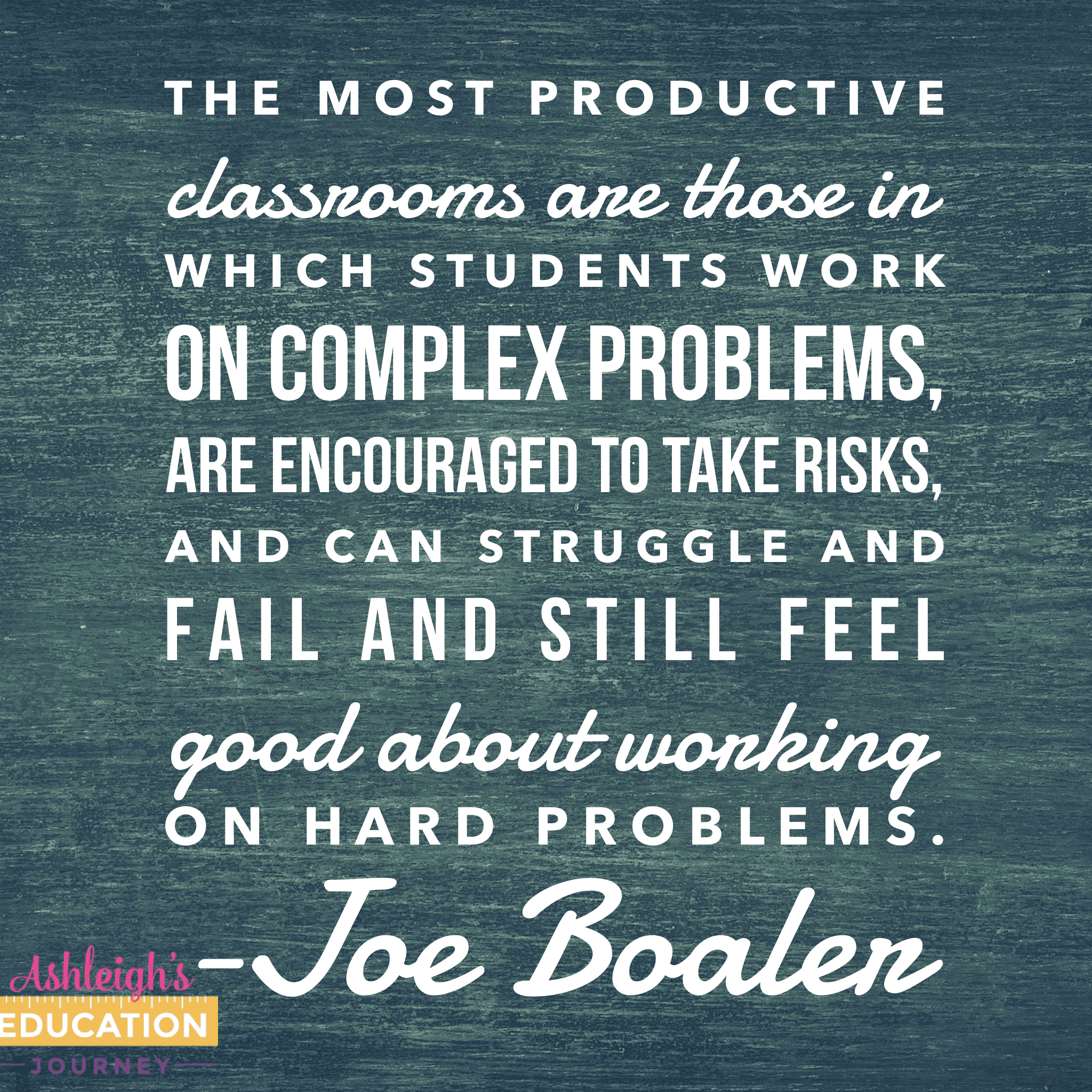
As students work, it can be difficult to know what questions to ask. These math question stems can be helpful for choosing how to best direct students. You can download a free copy of the question stems here.
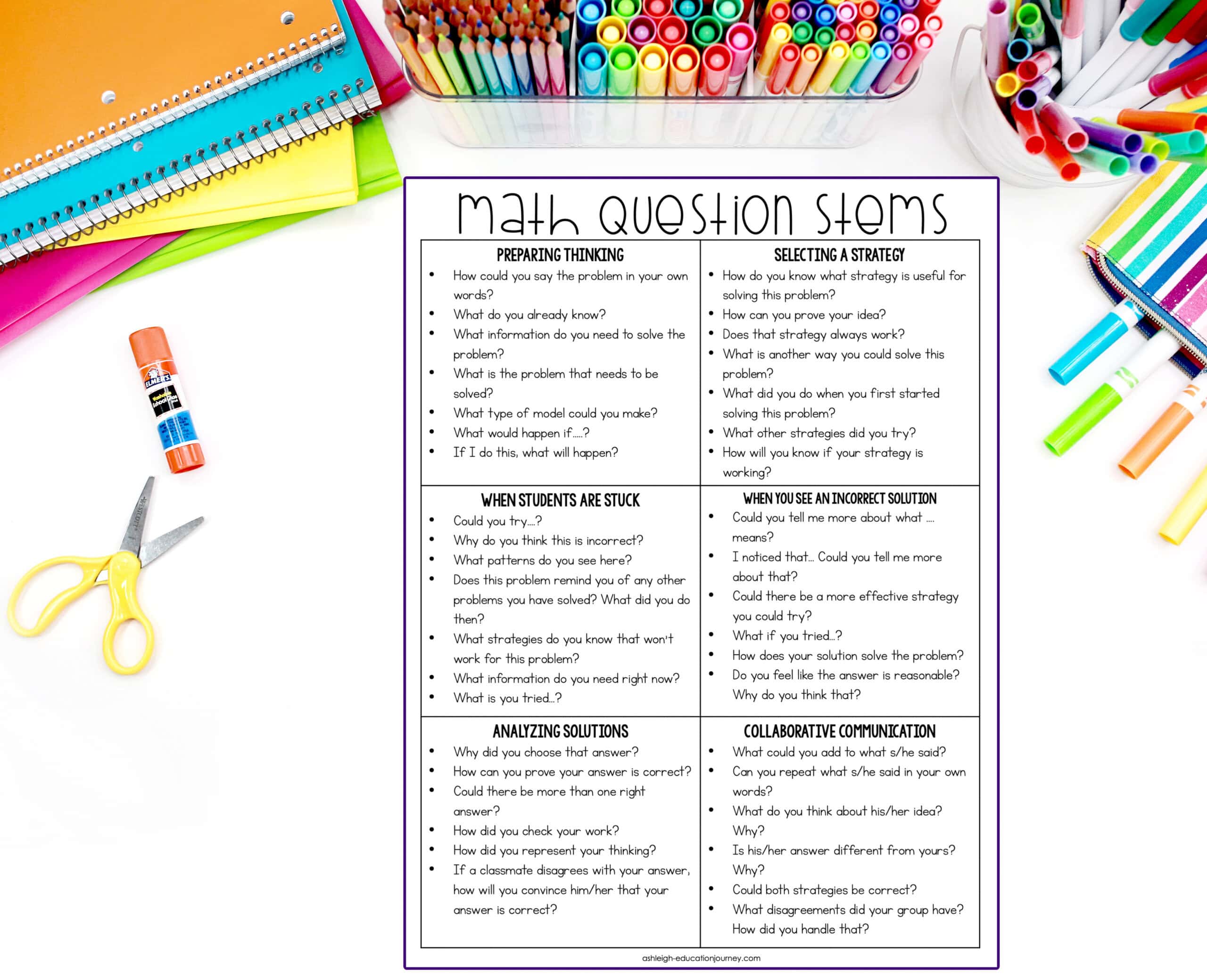
Class Environment
For productive struggle to be effective it is essential to have the right classroom environment. Students must feel safe to take risks. Students have to be taught that it’s okay to try and to fail. They must shift their mindset to thinking that failure can be a learning tool, not an end result. Students must also feel safe and comfortable to share with their classmates. They need to know that their ideas and suggestions won’t be laughed at or belittled.
It’s also necessary to take away the fear of making a bad grade. While I do give summative assessments, a learning task is not one that should be graded for the purpose of recording a grade. It’s fine to use the tasks as formative assessments, but I’ve found students feel much freer to accept change when the threat of a failing grade is removed. This also requires a change in the mindset of teachers. Many feel that if there is not immediate success the teacher has failed, and we have to change that thought pattern. This philosophy of teaching has tremendously reduced the amount of learned helplessness I see from my students. It’s dramatically reduced the stress level of my high achieving students, and encouraged everyone to be willing to learn and grow as mathematicians.
You can read more about teaching elementary math here. There is a TON of great content for you!

Super article, I cannot wait to use this! I just finished the week of inspirational math from Jo so this will go hand in hand. Thanks so much. I copied below perhaps a typo? I’m thinking you meant to say “must” me within students reach. 🙂
For the struggle to be productive, the mathematics mush be within reach of
I love this. I have been talking with my students about productive struggle and this will help me tremendously with some visuals.